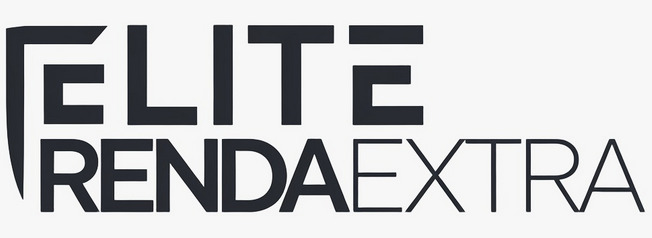Considering a personal loan to consolidate debt, finance a large purchase, or cover an unexpected expense is a common financial step for many Canadians. It’s a powerful tool that can provide the necessary funds to achieve your goals.
However, before you sign any dotted line, it’s crucial to understand exactly what you’re committing to. This is where a personal loan calculator becomes your most valuable ally, transforming complex financial figures into clear, actionable insights for your budget.
Why You Need to Estimate Your Loan Payments Before Applying
Jumping into a loan agreement without doing your homework is like setting out on a road trip without a map. A calculator provides that essential navigation, offering a clear picture of the financial journey ahead. It’s the first step in responsible borrowing.
Gaining Financial Clarity and Budgeting
The most immediate benefit of estimating your loan payment is understanding how it will fit into your monthly budget. Knowing whether a payment will be $200 or $500 per month allows you to assess affordability realistically. This foresight prevents you from taking on a debt that strains your finances, ensuring you can meet your obligations comfortably without sacrificing other essential needs.
Comparing Different Loan Offers
Lenders across Canada, from big banks to credit unions and online financiers, will present you with different offers. These can vary in interest rates, loan terms, and fees. A calculator allows you to input the details from each potential offer and see a direct, side-by-side comparison of the monthly payments and total interest costs. This empowers you to identify the most cost-effective option, potentially saving you thousands of dollars over the life of the loan.
Understanding the True Cost of Borrowing
The loan amount you receive is the principal, but it’s not the total amount you will repay. The true cost of borrowing includes the interest you’ll pay over the loan’s term. A calculator instantly reveals this figure—the total interest paid. Seeing this number can be a powerful motivator to choose a shorter loan term or make extra payments if possible, as it quantifies the real cost of your loan.
How to Use a Personal Loan Calculator: A Step-by-Step Guide
Using an online personal loan calculator is straightforward. You simply need to input a few key pieces of information about the potential loan to get your estimated payment details.
1. Loan Amount (Principal)
This is the total amount of money you want to borrow. Be realistic about what you need and what you can afford to pay back. Borrowing more than necessary will only increase your monthly payment and the total interest you pay.
2. Interest Rate (APR)
The Annual Percentage Rate (APR) is the interest rate for the whole year, rather than just a monthly rate. This is the primary cost of borrowing money. The rate you’re offered will depend heavily on your credit score, income, and overall financial health. Enter the rate you expect to get, or use a few different rates to see how it impacts your payment.
3. Loan Term (Amortization Period)
This is the length of time you have to repay the loan, typically expressed in months or years. A longer term will result in lower monthly payments, but you will pay significantly more in total interest. A shorter term means higher monthly payments, but you’ll pay the loan off faster and save on interest costs.
4. Payment Frequency
Most calculators default to monthly payments, which is standard in Canada. However, some allow you to see the impact of accelerated payment schedules, such as bi-weekly or weekly. Making more frequent payments can help you pay down the principal faster and reduce the total interest paid.
Understanding the Results: A Comparative Look
Once you’ve entered the data, the calculator will provide a breakdown of your loan. Seeing how different terms affect your payments is crucial. Let’s look at a common example for a $10,000 loan at a 7% interest rate.
| Loan Scenario | Loan Amount | Interest Rate | Loan Term | Estimated Monthly Payment | Total Interest Paid |
|---|---|---|---|---|---|
| A: Shorter Term | $10,000 | 7% | 3 Years (36 months) | ~$308.77 | ~$1,115.72 |
| B: Longer Term | $10,000 | 7% | 5 Years (60 months) | ~$198.01 | ~$1,880.60 |
As the table clearly shows, extending the loan term by two years lowers the monthly payment by over $100, but it costs an extra $765 in interest.
Key Factors That Influence Your Personal Loan in Canada
The numbers you plug into the calculator are not arbitrary. They are determined by several key factors related to your financial profile.
- Your Credit Score: This is arguably the most important factor. A higher credit score signals to lenders that you are a low-risk borrower, which typically qualifies you for lower interest rates. In Canada, scores range from 300 to 900, with anything above 660 generally considered good.
- Debt-to-Income (DTI) Ratio: Lenders will look at your Debt-to-Income Ratio to see how much of your monthly income already goes toward debt payments. A lower DTI indicates you have more capacity to take on a new payment.
- Type of Interest Rate: You may be offered a choice between Fixed vs. Variable rates. A fixed rate remains the same for the entire loan term, providing predictable payments. A variable rate can fluctuate with market rates, meaning your payment could go up or down.
- Lender Type: Traditional banks, local credit unions, and online lenders all have different criteria and may offer different rates. It’s wise to explore options from all three categories.
Beyond the Calculator: Smart Steps to Take Next
Once you have a solid estimate of your payments, your work isn’t done. The calculator is a planning tool, and the next steps involve action.
Check Your Credit Report
Before you apply, get a free copy of your credit report from Equifax or TransUnion. Check for any errors that could be dragging down your score and dispute them. Knowing your score will give you a realistic idea of the interest rate you might be offered.
Get Pre-Approved
Many lenders offer a pre-approval process that doesn’t impact your credit score. This involves a soft credit check and provides you with a concrete loan offer, including the interest rate and term. To get pre-approved from multiple lenders is the best way to shop around for the most favourable terms.
Read the Fine Print
An interest rate isn’t the only cost. Look for other fees, such as origination fees (for processing the loan) or prepayment penalties (a fee for paying the loan off early). These details should be clearly outlined in the loan agreement.
In conclusion, taking control of your borrowing journey starts with knowledge. By using a calculator, you move from uncertainty to empowerment, making decisions based on data, not guesswork. This simple action ensures your loan is a stepping stone to your financial goals, not a stumbling block for your budget. For further planning, you can use an official calculator from the Government of Canada to model various scenarios.

